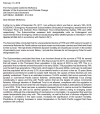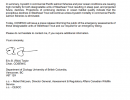I think the better approach is to examine all of the available data and making assumptions that are supported by the data rather than attacking the messenger when alternative narratives are presented.
Derby posted the link for Rob Bison's presentation on Thompson at:
https://m.facebook.com/BCWildlifeFederation/?__tn__=C-R
Searun presented key insights from that presentation in post #67 the previous page. Those key findings were:
1. Double survival from inshore predation
(pinnipeds) = change in pre-fishery abundance - 486%;
change in spawner abundance - 486%
2. Steelhead fishing mortality to zero
(removal of gill nets) = change in pre-fishery abundance - 11%;
change in spawner abundance - 39%
3. Maximize fry to parr survival
(habitat improvements) = change in pre-fishery abundance - 10%;
change in spawner abundance - 10%
Maybe key in on these data wrt effective management actions instead of attacking searun for offering an alternative narrative.





